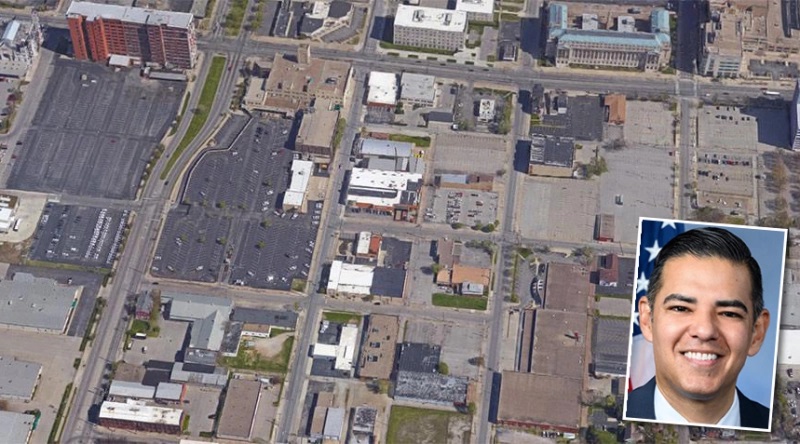The Dallas office of Better Block, an urban design non-profit, overlooks what Krista Nightengale calls “a sea of gray” — parking lots that sit empty almost all week long. “It’s not a lovely space, where you want to be outside,” says Nightengale, the group's executive director.
Better Block has worked with communities to transform lots just like the one into pop-up plazas and parklets, which prioritize pedestrians over cars. “Whenever we’re doing a project, the first question we ask is, ‘Are these streets serving the people who live here, or are they serving people passing through?’” After some transformations, crime rates have dropped as people start using the new public gathering spots, basketball courts and other amenities instead of merely scurrying through the area, says Nightengale.
Over the past few years, a growing number of U.S. cities has been reconsidering laws and codes that prioritize parking spots over residents and pedestrians. Most recently, the city of Austin, Texas, got rid of zoning requirements that called for 1.5 parking spaces for every one bedroom apartment. Austin follows places like Portland and Buffalo, which was one of the first major cities in the U.S. to do away with minimum parking requirements in 2017.
This month, California Rep. Robert Garcia (D-Long Beach) introduced a bill that would limit city governments’ power to enforce minimum parking mandates. The so-called “Home for People Not Cars Act” would discourage cities from enforcing parking spot requirements for new homes and businesses built within a half-mile of public transit services..
“Across the country, more and more cities are finding a simple way to lower housing costs: increase downtown development anchored in public transit and improve the environment by removing mandatory parking minimums,” Garcia said in a press release. “Not only does eliminating parking requirements support smart growth, it reduces pollution emissions and promotes green space by promoting public transit and replacing heat-island blacktops with green spaces that improve stormwater management.”
The bill is similar to one that the California state legislature passed last year. That bill was itself historic in its scale, marking the first time that a state-wide parking reform has been adopted. Typically, this issue has been tackled on the local level, by city councils and planners — not state, and certainly not federal, legislators. Garcia’s bill marks the first time that parking reform has been introduced in Congress.
But legal experts say the federal bill seems unlikely to pass – it could be considered an overreach of federal authority over municipal governments. But Garcia has drawn attention to just how much space cities are wasting on parking spots in the midst of simultaneous affordable housing and climate crises.
A recent white paper by the non-profit Open Plans found that reducing parking mandates in New York City would significantly reduce the cost of building new housing. The cost of constructing a unit of parking for a unit of housing, for example, is estimated to increase rent by 17 percent.
Other studies have shown that building parking attracts more drivers – particularly when alternatives like public transit aren’t as convenient. In the U.S., passenger cars account for roughly 16 percent of the nation’s greenhouse gas emissions.
The overall goal of reforming parking policy isn’t solely to make driving and parking harder: it’s also to make walking, biking, or using transit easier. In Buffalo, for example, after the city lifted minimums, developers were able to convert old buildings into housing without having to shell out for parking garages; infill development also became easier to build when space didn’t have to be allocated for cars, says Rob Steutville, an expert with Congress for New Urbanism. “There wasn’t a whole lot of thought into what the real purpose of parking requirements was, and what they were doing to cities,” he adds.
In Dallas, Nightingale says that it just takes a few thousand dollars, alongside community engagement, to rethink how cities allocate that space. “We have shirts that say, ‘It’s hard to find parking in great places,’” she says. Sometimes, residents might initially be skeptical that taking away parking spots from churches or stores can make their neighborhoods better. But time and time again, Nightingale says, people warm up to having a communal space to gather and organically meet their neighbors. “The places that we love to go, the places we love to spend time – those were built for us, not for our cars.”







